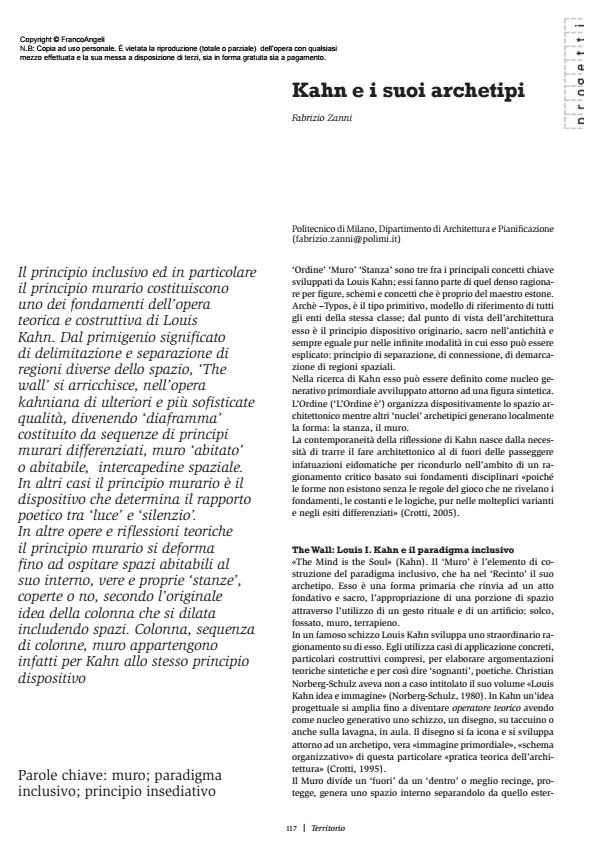Kahn and his archetypes
Journal title TERRITORIO
Author/s Fabrizio Zanni
Publishing Year 2012 Issue 2012/60
Language Italian Pages 3 P. 117-119 File size 169 KB
DOI 10.3280/TR2012-060021
DOI is like a bar code for intellectual property: to have more infomation
click here
Below, you can see the article first page
If you want to buy this article in PDF format, you can do it, following the instructions to buy download credits

FrancoAngeli is member of Publishers International Linking Association, Inc (PILA), a not-for-profit association which run the CrossRef service enabling links to and from online scholarly content.
The inclusive principle, and the wall principle in particular, constitute one of the foundations of Louis Kahn's theoretical and construction work. From the primordial meaning of delimitation and the separation of different regions of space, the "wall' in Kahn’s works acquires further and more sophisticated qualities, becoming a diaphragm, consisting of sequences of different wall principles: an ‘inhabited’ or inhabitable wall, a spatial interspace. In other cases the wall principle is a device which determines the "poetic" relationship between "light" and "silence". In other works and theoretical thinking, the wall principle is deformed to the point where it accommodates inhabitable spaces within it, genuine "rooms", with or without roofs, based on the original idea of a column which expands to include space. For Kahn, a column, a sequence of columns, and a wall all belong to the same device and principle.
Keywords: Wall; inclusive paradigm; settlement principle
Fabrizio Zanni, Kahn e i suoi archetipi in "TERRITORIO" 60/2012, pp 117-119, DOI: 10.3280/TR2012-060021